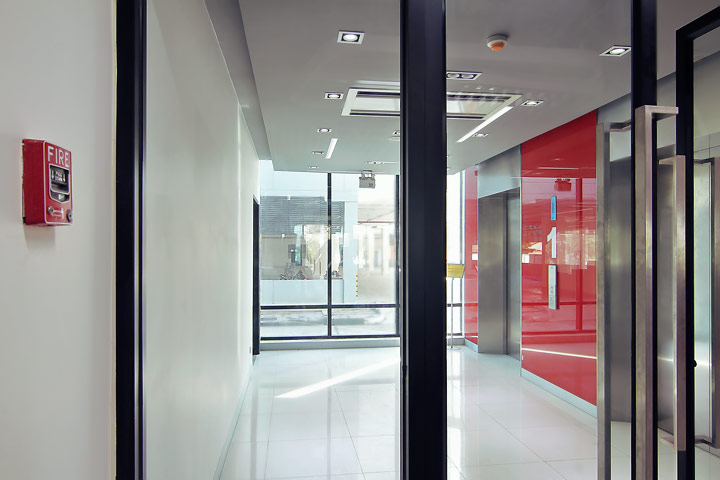
01 Sep Security News: Securing Areas of Refuge in Your Commercial Building
Reprinted from American Alarm
 According to Massachusetts building code, most multi-story commercial buildings constructed or extensively renovated after 2015 are required to include an area of refuge in their design. (Note: There are certain exceptions to this code, including certain types of healthcare facilities and buildings with supervised automatic sprinkler systems.)
According to Massachusetts building code, most multi-story commercial buildings constructed or extensively renovated after 2015 are required to include an area of refuge in their design. (Note: There are certain exceptions to this code, including certain types of healthcare facilities and buildings with supervised automatic sprinkler systems.)
If your business or organization operates in a building with areas of refuge, there are certain emergency communication requirements that you must follow to comply with egress requirements. Your security strategy should account for these requirements to ensure the safety of building occupants.
Here’s what you need to know about securing areas of refuge in your commercial building.
What is an area of refuge?
Areas of refuge (sometimes referred to as areas of rescue) are spaces within a building where occupants can seek shelter during an emergency while awaiting rescue. Typically, these spaces are used by individuals who do not have the physical capacity to exit the building using the stairs, such as individuals in wheelchairs or elderly people.
In some instances, individuals may shelter in an area of rescue because exit paths from the building are unsafe or inaccessible.
Areas of refuge are most often located at an elevator landing, a stairwell, or in a vestibule on the interior or exterior side of an exit door.
What are the security requirements for areas of refuge?
There are several structural and design requirements for areas of refuge, including stipulations around headroom heights and level walking surfaces. For the purposes of this article, we’ll focus on the security and communication requirements of these spaces.
Areas of refuge must have two-way communication systems
Two-way communication systems are required in every area of refuge within buildings more than four stories high. This enables anyone sheltering in an area of refuge to summon help as needed. Without a communication system in place, building managers may have no idea that anyone is in need of assistance.
According to the National Fire Protection Association (NFPA), these systems must facilitate communication between the area of rescue and either the fire command center (Central Station) or a central control point within the building. The central control point must be approved by the authority having jurisdiction (AHJ) where the building is located.
The two-way communication systems must incorporate both audible and visible signals, to ensure they meet standards outlined within the Americans with Disabilities Act (ADA).
Signage explaining how to operate the communication system
The emergency communication system placed within an area of refuge must have adequate signage explaining how to use it in an emergency.
According to state building codes, the sign must include:
- Directions to other means of egress (meaning other exits from the building)
- A recommendation that individuals exit the building using the stairs if they are able unless they are assisting others
- Instructions on how to call for help exiting the building
- Directions on how to operate the emergency communication system
Incorporating adequate communication systems in your building’s areas of refuge is essential for ensuring the safety of any building occupants in an emergency. An experienced security partner can help you find solutions to ensure your areas of rescue are effectively integrated into your building’s overall security strategy.





 According to
According to